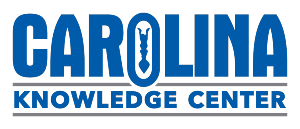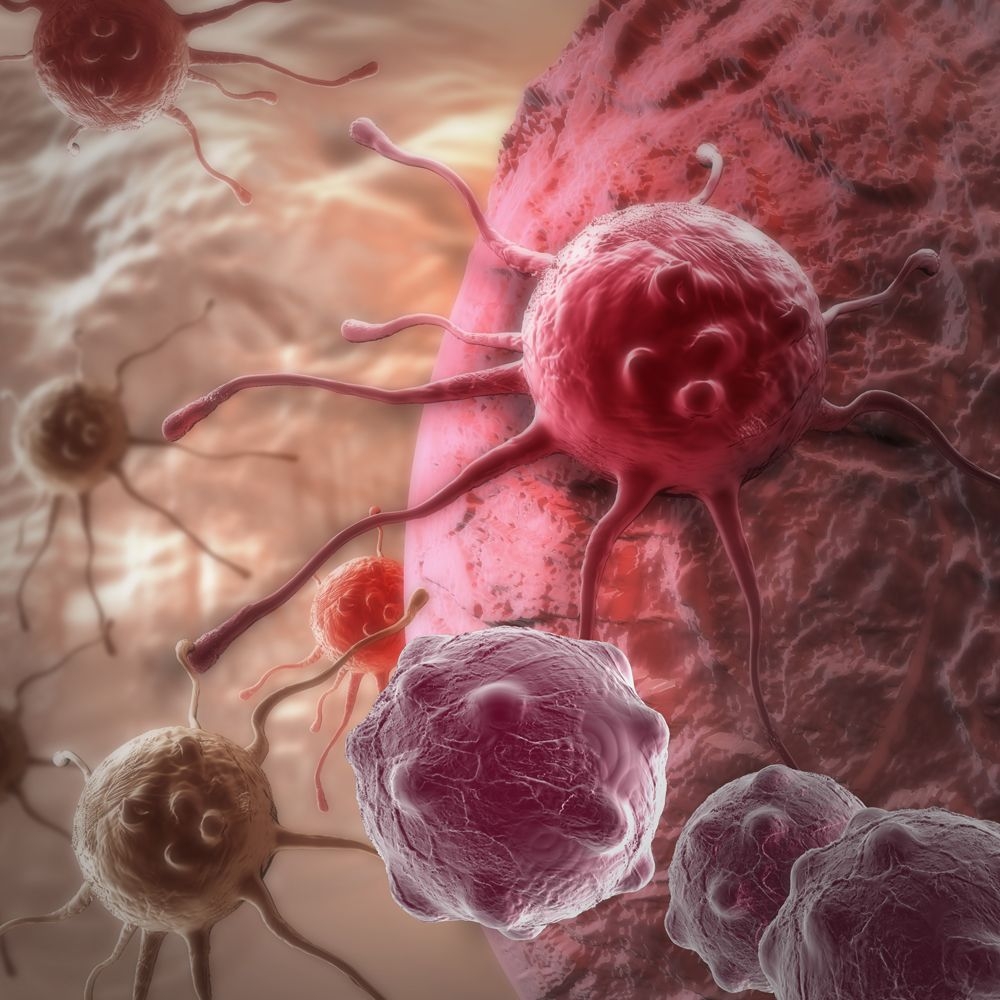While multiple forms of cancer exist, ultimately all cancers involve a loss of control of the cell cycle and dramatic changes in the rate of cell division.
Cancer is a genetic disease, but primarily an acquired one. Most mutations arise from DNA errors introduced during replication that subsequently go undetected and avoid repair. DNA damage from mutagens like ultraviolet rays or the compounds found in cigarette smoke can cause cancer as well.
How is the cell cycle related to cancer?
The cell essentially must wait to receive the appropriate signals before moving through each phase of the cell cycle. Multiple checks and balances ensure that conditions are right and mistakes are minimized. Cancer cells have acquired mutations that result in growth regardless of the conditions. In many cancer cells, the signaling proteins have been mutated and behave as though they are always relaying growth signals from the cell’s surface into the nucleus. At the same time, cancer cells short-circuit checkpoints, allowing cell division to proceed without review–even in the presence of DNA damage. The cell cycle becomes dysregulated, and growth and cell division unchecked.
What kinds of mutations are involved as cells progress from a stable state to a cancerous state?
The transformation of a normal cell into a tumor is a stepwise progression. Cancer begins with a single starting cell that becomes genetically damaged. This damage occurs in 1 of the genes that regulate cell growth, allowing the mutated cell to outgrow the cells that surround it.
Often, after this cell has undergone multiple rounds of growth and division, a second mutation occurs in a daughter cell, further increasing the rate of cell growth. Those cells with a single mutation continue to grow, but they soon become vastly outnumbered by the cells with 2 mutations. This process continues as additional mutations accumulate and the cells become progressively more abnormal. Ultimately the collection of total mutations allows the cancer to invade the surrounding tissues and/or spread to other parts of the body (metastasis).

The acquisition of the mutations that transform normal cells into cancerous ones generally occurs over many years. Each mutation tips the balance in favor of cell division only slightly. However, when accrued over a couple of decades, this slight increase results in a mass containing billions of cells. Current estimates suggest that 2 to 8 mutations are required to produce a metastatic tumor.
Some mutations occur in proto-oncogenes, which are the genes normally involved in stimulating cells to divide. The mutated form of these genes (now called oncogenes), lead to overstimulation and increased cell division. Many of the genes that encode proteins involved in the growth signaling pathway fall into this category.
Mutations can change the proteins’ function so they continually behave as if the growth signal is present. As a result, the mutated protein activates downstream players in the signaling pathway, and the cell progresses through the cycle toward mitosis. Mutating only 1 of the 2 copies of an oncogene is sufficient to provide the cells with the necessary growth advantage.
Another group of genes, known as tumor suppressors, produce checkpoint proteins that normally block cell division unless the right conditions are present. Unlike oncogenes, mutating a single copy of a tumor suppressor is not enough to increase cell growth–the protein produced from the unmutated copy maintains the cell cycle block. Both copies of a tumor suppressor gene must be mutated to deregulate the checkpoint.
Other mutations occur in DNA repair genes whose proteins identify and mend damaged DNA. If these pathways are knocked out, the cell loses its ability to correct errors and mutations accumulate across the entire genome. By chance, some of these mutations will occur in oncogenes and tumor suppressors, further driving the cells towards a cancerous state.
Cancer-causing genetic mutations can occur through several different processes and may impact protein function in different ways.
Is there a single pathway to cancer?
Multiple pathways can be mutated to provide cells the selective growth advantage. Every tumor has a unique combination of genetic changes. This explains why 2 patients with the same type of cancer may have very different tumor characteristics. One may be fast growing, aggressive, and resistant to several types of treatment, while the other may grow quite slowly and respond well to the first therapy offered.
Genetic analysis of individual cancers identifies these distinctive mutation patterns and provides insight into a patient’s prognosis and ideal treatment option. However, while more than 150 different cancer-causing genes have been identified, they can be classified into only a dozen or so biological pathways. For example, the response to a certain growth factor may involve messenger proteins produced by 15 different genes. An oncogenic mutation in any of them will produce the identical cell cycle effect.
What about inheriting a risk for cancer?
A small percentage of some cancers are caused by inherited mutations. This accounts for about 5 to 8% of certain forms of breast, ovarian, colorectal, and possibly prostate cancers. The genetic mutation is present in the egg or sperm from a parent, and consequently, the mutation is found in every cell of the individual.
These mutations greatly increase the risk that the individual will develop cancer during his or her lifetime. For example, a group of mutations linked to hereditary nonpolyposis colorectal cancer (HNPCC) increases the risk of developing cancers of the colon and rectum. The typical American has a 4% risk of developing colon cancer at some point during his or her lifetime. Mutations in the MSH2 gene, which is involved in DNA repair, increase that lifetime risk to 50 to 80%.
Errors in this gene reduce the concentration of DNA repair proteins, allowing mutations to escape cell checkpoint detection and accumulate within the cell. While these mutations dramatically increase the lifetime risk of developing colon cancers, they do not guarantee a cancer diagnosis. In order for cancer to develop, additional mutations must accumulate, further altering the rate of cell division. Thinking statistically, imagine a population of 100 people with an inherited MSH2 mutation. As many as 50 of those people will not develop cancer because their cells do not acquire the necessary additional combination of mutations.
Can cancer risks be lowered through diet?
Overall cancer risk can also be altered through changing environmental factors like diet. While the interplay between environmental factors and genetic factors is still being studied, diets that are rich in leafy, fibrous vegetables and limited in red meat consumption reduce the rates of colorectal cancer. This example illustrates that an inherited mutation does not in and of itself cause cancer. Even in the case of inherited high-risk mutations, complex interactions between genes and environment determine the fate of cells.
New kit from HudsonAlpha
With the HudsonAlpha kit Collecting Cancer-Causing Changes, students simulate the accumulation of mutations in a population of cells undergoing multiple cell divisions. Colored beads are used to represent de novo mutations that can impact the rate of cell division. By comparing the fate of cell divisions and mutation patterns that accumulate across the class, students investigate pathways that can ultimately lead a cell to become cancerous.
Students see that multiple mutations are necessary for the development of cancer, and they observe the function of tumor suppressors, oncogenes, and DNA repair genes. They also review misconceptions surrounding mutations and their function in cancer genetics. You can conclude the activity with class-wide discussions focused on the diversity of data, impacts on cell cycle regulation, and the implication of these results to reinforce key concepts related to the cell cycle and cancer development:
- Multiple mutations are necessary for cancer development.
- There are multiple pathways involved in cancer formation that may include tumor suppressors, oncogenes, and DNA repair (driver genes).
- Not all cancer causing mutations impact the rate of cell division.
- There is no magic number of mutations at which point cancer occurs.
- Not every mutation occurs in a gene involved in cancer formation (passenger).


